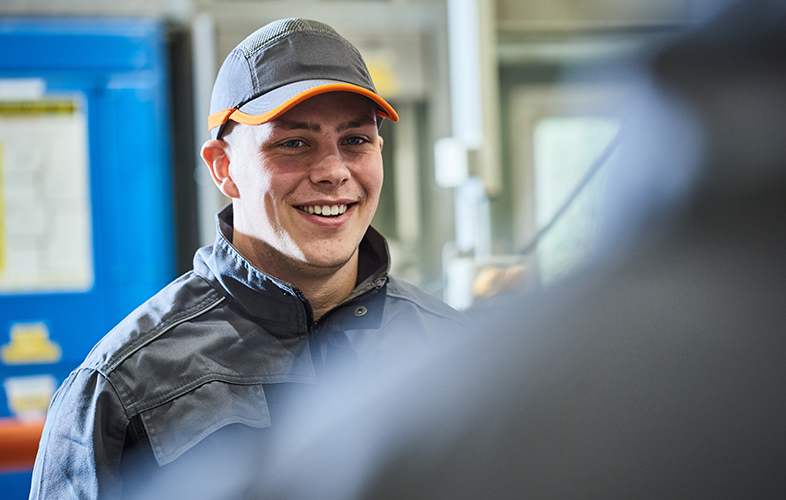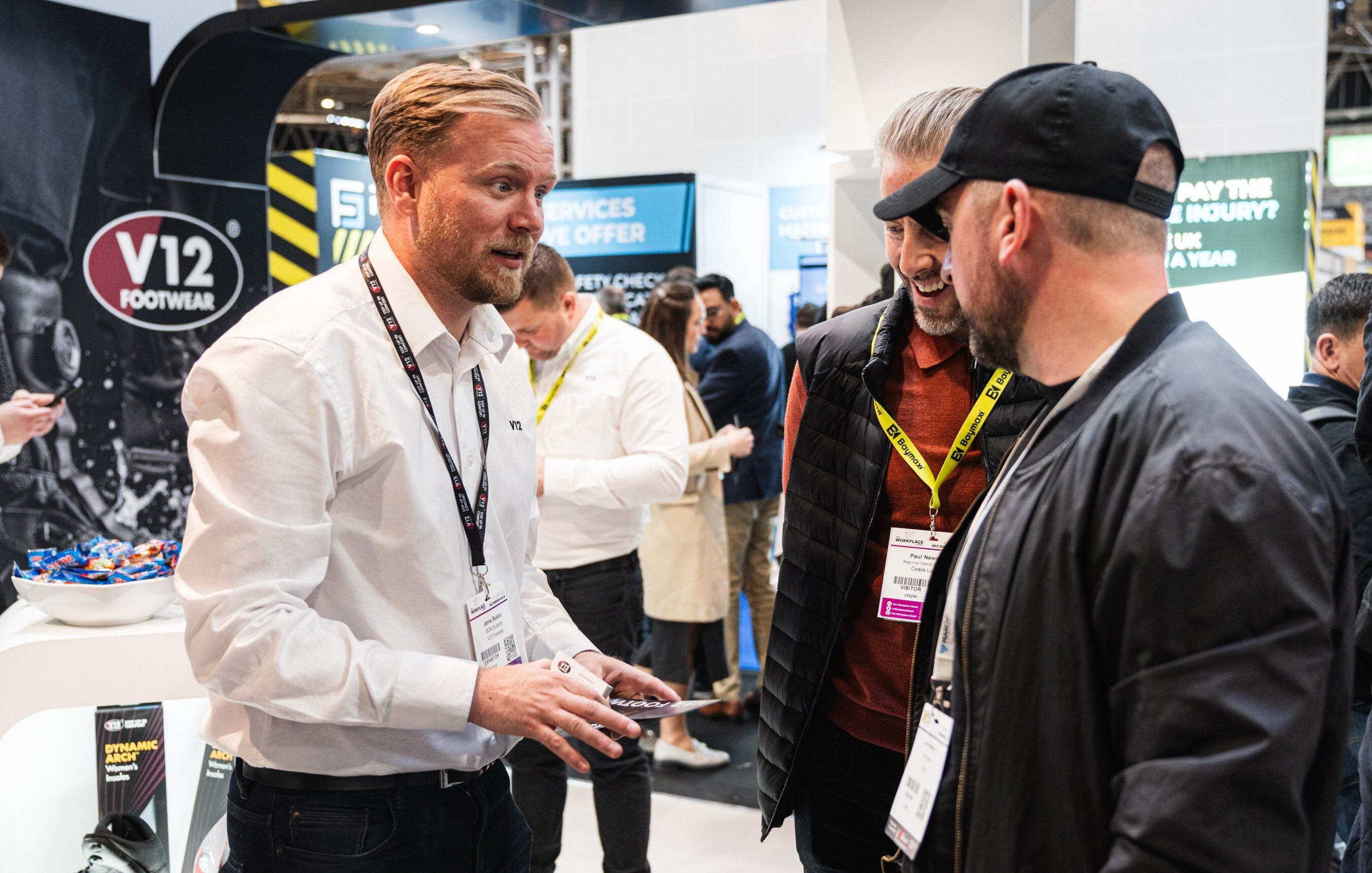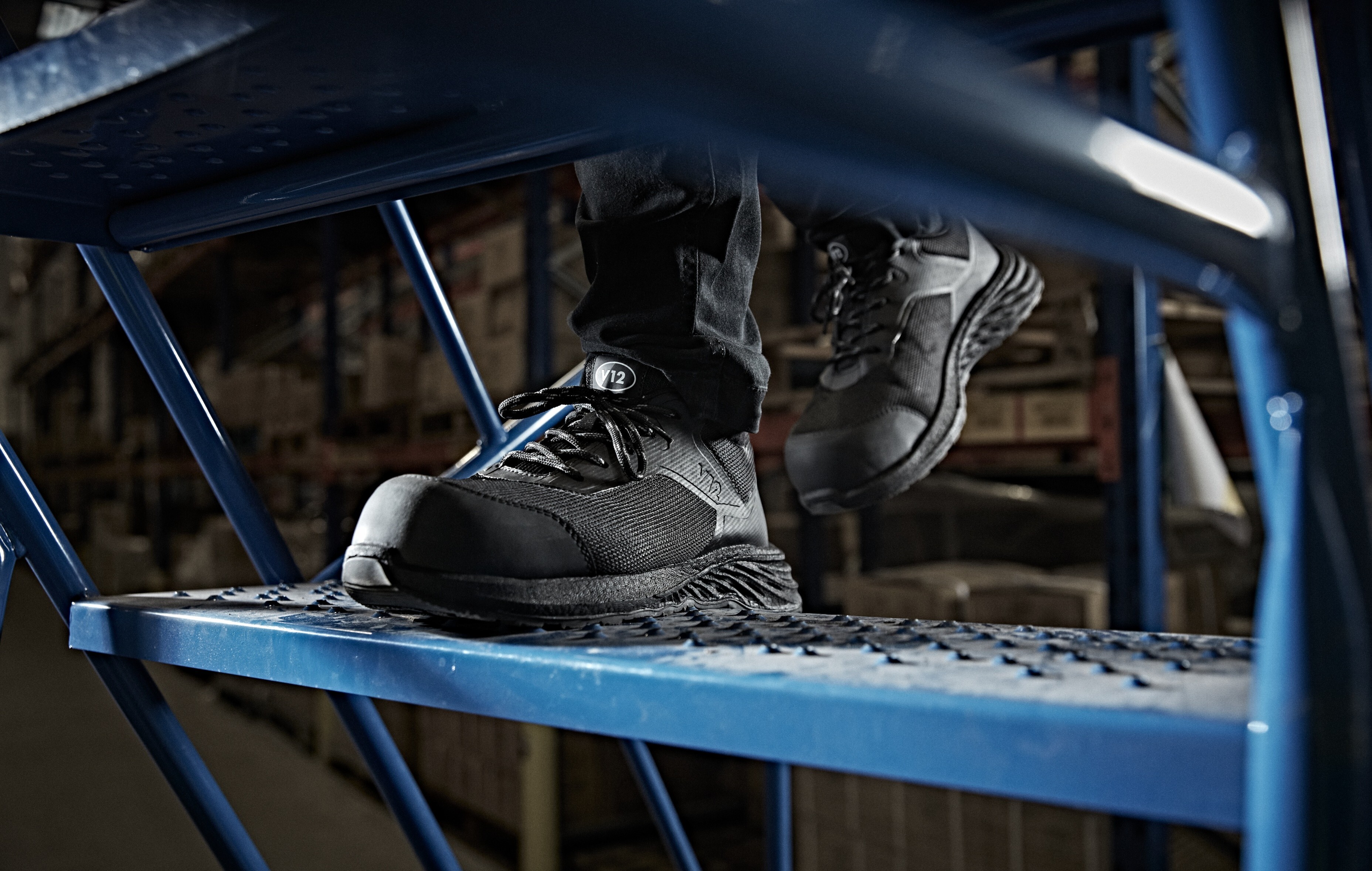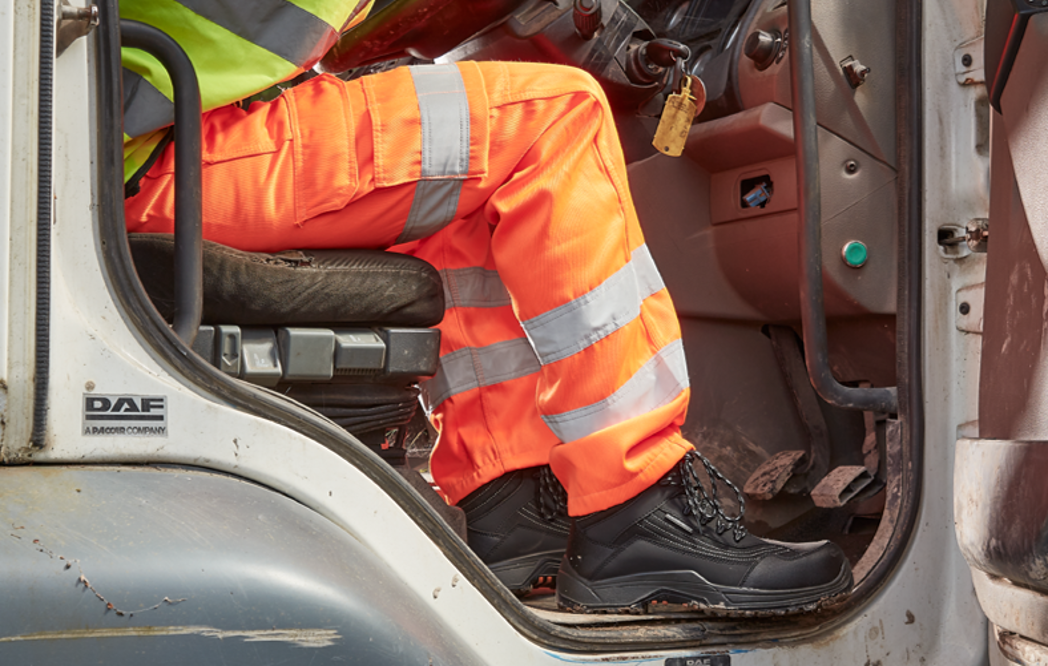If you’re responsible for PPE procurement or Health and Safety, you’ll know how crucial it is to create the safest environment for your workforce. In this blog, we’ll cover the key questions you should be asking yourself when identifying workplace risks, and highlight some of the best safety footwear solutions to meet these hazards.
To reduce risk and injuries and elevate performance and productivity, when assessing your workplace's hazards, ask yourself:
Is there a danger of sharp objects piercing workers' underfoot?
If sharp objects such as nails or screws can end up on the floor of your workplace, this means your chosen footwear should have anti-perforation midsole protection.
👣 Footwear fact:
Many people don’t realise that anti-perforation (or anti-penetration) midsoles don’t have to be steel. Increasingly, procurers are opting for composite midsoles, which are just as strong as steel, but much lighter and more flexible, which aids comfort and reduces fatigue.
Is there a danger of heavy or falling objects crushing workers' toes?
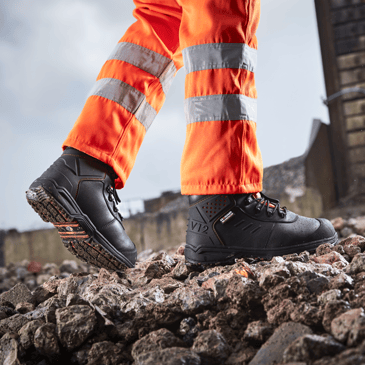 A heavy or falling heavy item can take many forms. A toe can be injured or crushed by heavy tools, improperly stored equipment, a dropped breeze block or drain cover, or even the hooves of livestock.
A heavy or falling heavy item can take many forms. A toe can be injured or crushed by heavy tools, improperly stored equipment, a dropped breeze block or drain cover, or even the hooves of livestock.
Danger comes in all directions, so get to know all the hazards.
Specialist footwear?
Many who are responsible for providing safety footwear for those in construction roles such as aggregate and quarrying often don’t realise that specialised safety footwear such as metatarsal protection is often needed to safeguard wearers' feet.
Does your workforce need a boot which protects their metatarsal area? Find out more here.
Pictured: V12's metatarsal boot V2180 Invincible IGS. Its internal carbon met protection system is 200x stronger than steel.
Are workers exposed to any extreme hot or cold temperatures?
Working in extreme temperatures can have a very significant impact on productivity, performance and above all, safety focus. Thankfully, there is a lot of safety footwear on the market that can cater for these demanding conditions. From breathable uppers and heat-reducing insoles, right the way up to insulating lining and cold-resistant outsoles, there’s a solution to combat even the most extreme weather. Find out more here.
👣 Footwear fact:
Studies show that people who are cold at work make more errors.
Are there electrostatic or electrocution risks?
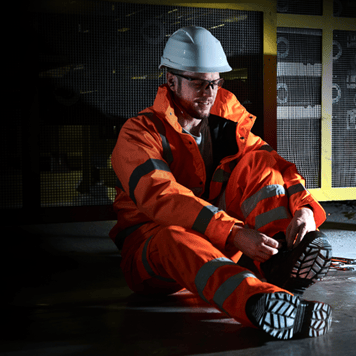 Getting the right kind of footwear to help protect the wearer from shock and electrocution or safeguard sensitive equipment from static shock damage is a big challenge for any PPE procurer. This is because there are several 'electric' safety boot options on the market with very different markings, all claiming to have some kind of electrical safety benefit.
Getting the right kind of footwear to help protect the wearer from shock and electrocution or safeguard sensitive equipment from static shock damage is a big challenge for any PPE procurer. This is because there are several 'electric' safety boot options on the market with very different markings, all claiming to have some kind of electrical safety benefit.
What’s crucial is that you know the difference between the markings, and which one is best for your team based on the hazards they face. We’ve written a blog to help you. Read it here.
Surface
The surface on which your employees walk is arguably the factor that can prevent - or cause - the most injuries. You should ask yourself the following questions about the ground on which your workforce work:
Is there a danger of workers slipping on contaminated or wet surfaces?
Slips, trips and falls are still the most common non-fatal accident at work. Hard and strong protective safety boot components are all well and good, but without adequate grip, slip accidents can and will happen.
👣 Footwear fact:
Less than 1% of occupational accidents involve injuries to the toes, whereas more than 30% of non-fatal occupational accidents are slip-related, according to the HSE.
Is there a danger of workers falling or twisting their ankles on uneven surfaces?
Uneven surfaces are to be expected in the workplace, whether that’s changing levels or working on loose or less stable natural ground. Your team’s safety boots should not just have good grip – they should have the right grip, with a tread design specifically for the type of surfaces they're working on to reduce slips and increase traction. Want to know more? Take a look here.
Is there a danger of any contaminants corroding the upper or sole?
Working around chemicals or oils can degrade important areas of the boot such as the sole and upper; these types of risks should be factored in when auditing how safety footwear can mitigate accidents.
Comfort
The average safety boot wearer walks up to seven miles per day, so it’s vital that footwear is comfortable. If it isn’t, this poses a risk in itself, as pain and discomfort can cause a loss of safety focus, poor foot health and long-term musculoskeletal issues.
Size
When V12 have gone into workplaces to carry out foot health and safety assessments, we’ve found that in some workforces, over 80% of staff have been wearing the wrong size footwear. A serious foot health and safety issue, and ironically so easily overlooked by Health and Safety.
Fit
There is a lot of safety footwear on the market, but not all of it is made for comfort. Rather than a generic last which reflects the foot shape of the country it was made in (often China, which means it is commonly too narrow for European wearers as the people native to China have narrower feet) footwear should be based on a last which reflects universal foot shapes.
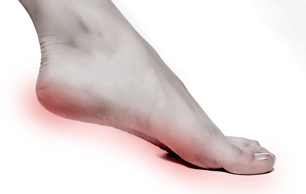
Arch support
In the UK, around 1 in 10 people will experience the heel pain of Plantar Fasciitis during their lifetime. And yet so often, workforces end up walking thousands of steps per day in pain and discomfort, when the solution is a simple dynamic insole with correct arch support.
We’ve made a series of foot health and safety videos to help you. Check them out here.
Some final questions for you to consider:
- Is footwear properly maintained and stored?
-
Are my team compliant with their footwear, or are they wearing the wrong safety boots? Why might this be happening?
- Safety footwear standards have recently been updated – do I know the changes?
- When's the last time I read about the latest safety footwear innovations? Could my team be wearing a safer boot?
- Finally, something that Health and Safety managers should always do but is often overlooked? Speak to the people on the ground! Workers will be able to tell you better than anyone about the common near misses, unreported hazard areas or safety concerns they might have, so use their expertise and experience to help you identify the risks.
WE CAN HELP
If you’re struggling to find the time and resources to conduct a comprehensive audit of your workplace hazards, or if you need support in understanding if your team have the right footwear for the specific hazards of your workplace, V12 Footwear can help.
Our product suitability assessment is a 3-step foot health and safety assessment process which advises you on the footwear most suitable for your workplace environment and work-specific hazards: It includes:
- an industry-leading audit
- a safety footwear trial process
- our expert product recommendation
When it comes to keeping your team safe, you should choose the experts. To find out how to get started, click below.

